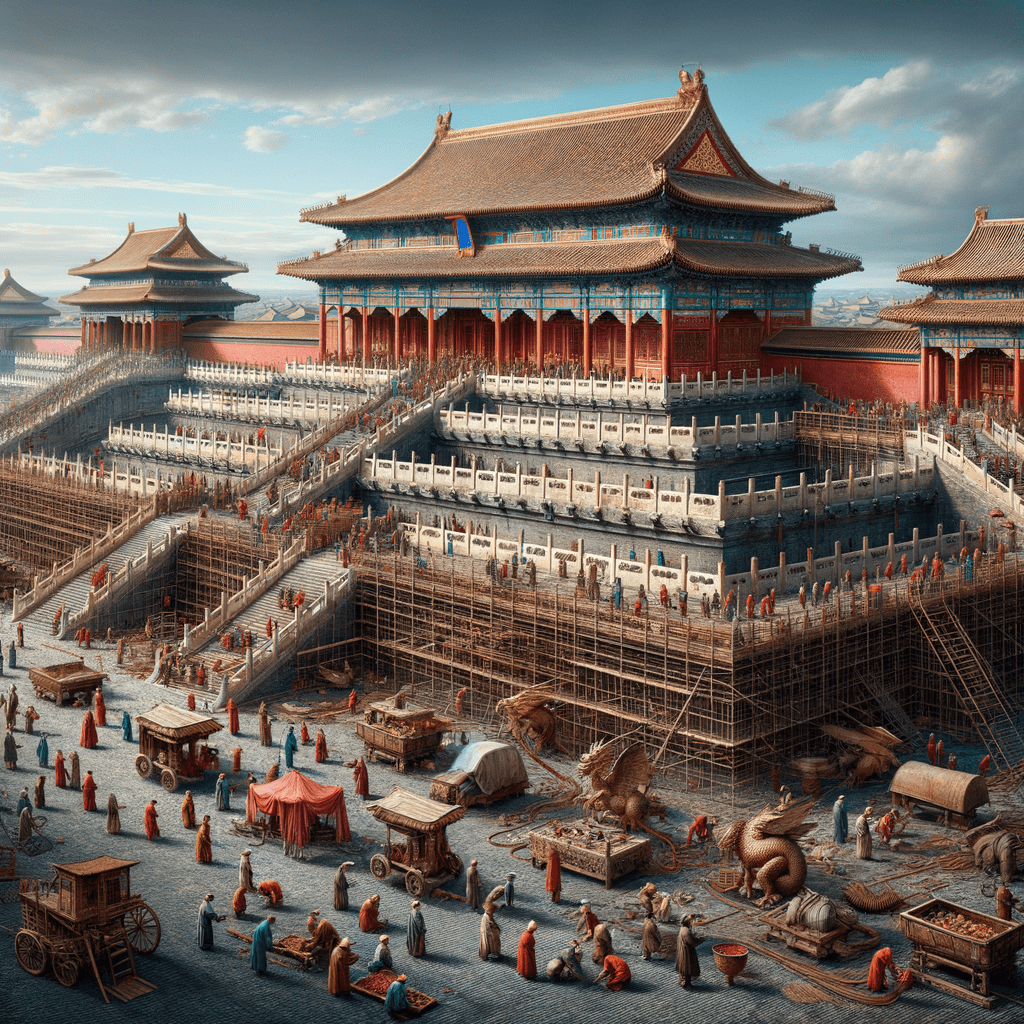Unveiling the Mystique
Ah, the Forbidden City—a place that just whispers “mystery.” If there’s anything that can send my imagination on a rollercoaster ride, it’s this iconic marvel nestled right in the heart of Beijing. It’s not just any historical site; it’s draped in a shroud of history, secrets, and tales that go back centuries. The very thought of strolling through its ancient corridors, feeling those ghostly whispers of the past skim by my ear, and running my fingers over the timeworn walls, got my heart skipping a beat the very first time I read about it.
Let me tell you, the Forbidden City wasn’t just patched together by a bunch of folks with some spare bricks over a long weekend. No, sir. Back in the faraway days of the early 15th century—seriously feels like eons ago!—the mighty Emperor Zhu Di, the Yongle Emperor, decreed he needed a palace. And not just any palace, a symbol of absolute power and eminence. Talk about aiming high!
A Dream Carved in Stone
Construction kicked off in 1406 and wouldn’t you know it, it took a whopping 14 years to finish. Fourteen! That’s like forever if you ask me! It wasn’t child’s play either. They had millions of workers and artisans getting their hands dirty. Some folks even say it’s the largest collection of ancient wooden structures on the planet. Makes my humble patio project seem like a walk in the park.
Fast forward to now, and there it stands, still one of the planet’s most awe-inspiring places. With around 1,000 buildings sprawling over 180 acres, it was the epicenter of political and ritual life in China for over 500 years. I mean, can you even begin to imagine the gazillion decisions and political dramas that unfolded within those walls? Sends shivers down my spine.
The gates open up to vast courtyards, but trust me, the real gold lies in the poetic details. Think vivid beams, thrones fit for gods, and ceramic tiles gleaming like they have secrets to share. Each stone, each dusty corner whispers a story, leaving me longing for those walls to have mouths.
Life Behind the Veil
Ever find yourself wondering what life would have been behind those towering walls? Despite the grandiose image, living in the Forbidden City wasn’t all dreamy, rainbow-streaked fairy tales. It was a complicated world of court life wrapped in luxury and power, yet woven with strings of solitude and constraint.
Consider being surrounded by splendor, and yet your world is confined. No spontaneous street market strolls or carefree picnic adventures by a bubbling brook. From emperors to concubines and eunuchs, everyone had roles drenched with restrictions and pressures. I can almost hear the soft tick of paranoia and feel the cool breeze of plotting and betrayal. Gives me the heebie-jeebies just mulling it over.
The Political Chessboard
Ah, the politics! It was like a chess game with so many secret moves and hidden traps. Everybody wanted to be next to the emperor, but it was the cunning ones who usually ended up with the plum spots, not necessarily the talented ones.
Conspiracies, power play, whispers of rebellion—imagine the political thunderstorm raging within those serene walls. It’s fascinating how these covert shenanigans could steer the course of history, leaving not even a crumpled page behind.
The Secrets Behind the Golden Doors
Beyond power and politics, the Forbidden City is art frozen in time. It’s like walking through a 3D gallery with breathtaking architecture and invaluable artifacts weaving the quintessence of Chinese artistry. Dragons dart and zoom over rooftops while phoenixes dance on painted canvases, each bit of decoration carrying profound meaning. Divine connections between the emperor and heavens, power of dragons, grace of phoenixes—it’s as if everything had a voice. It truly earns its reputation of divine.
When Time Strolled On
But time waits for no one, eh? As the hands of history moved, the Qing Dynasty came around, the last to rule from the Forbidden City. It all came tumbling down in 1912 with the abdication of Puyi, the last emperor.
That moment—like the closing of the curtains on a grand play—was a solemn twist in history. Yet, the Forbidden City transformed into a cultural treasure chest, the past gently shaking hands with the present. Now a museum, it invites the world to peek into tales of ancient epochs, one story at a time.
Echoes and Tales
Today, the Forbidden City stands tall, a symbol of resilience etched through time. The dancing duo of stunning architecture and history’s strength alongside human fragility waltz through its halls.
Despite the modern bustle of Beijing swirling around, it remains calm and steady, echoing stories from days long past. It’s not just a journey to admire Chinese history but a fusion of past and present, where a world comes to embrace the robust tapestry of times gone by.
Standing before those daunting walls, I’m left huddled in awe, my heart brimming with respect. If those gates could spill their tales, what a symphony of stories they would share. If fate lends you the opportunity, step through the Meridian Gate and let history sweep over you like a wave. It’s a place where tales leap off the pages, resonating deep into the wanderer’s soul.




